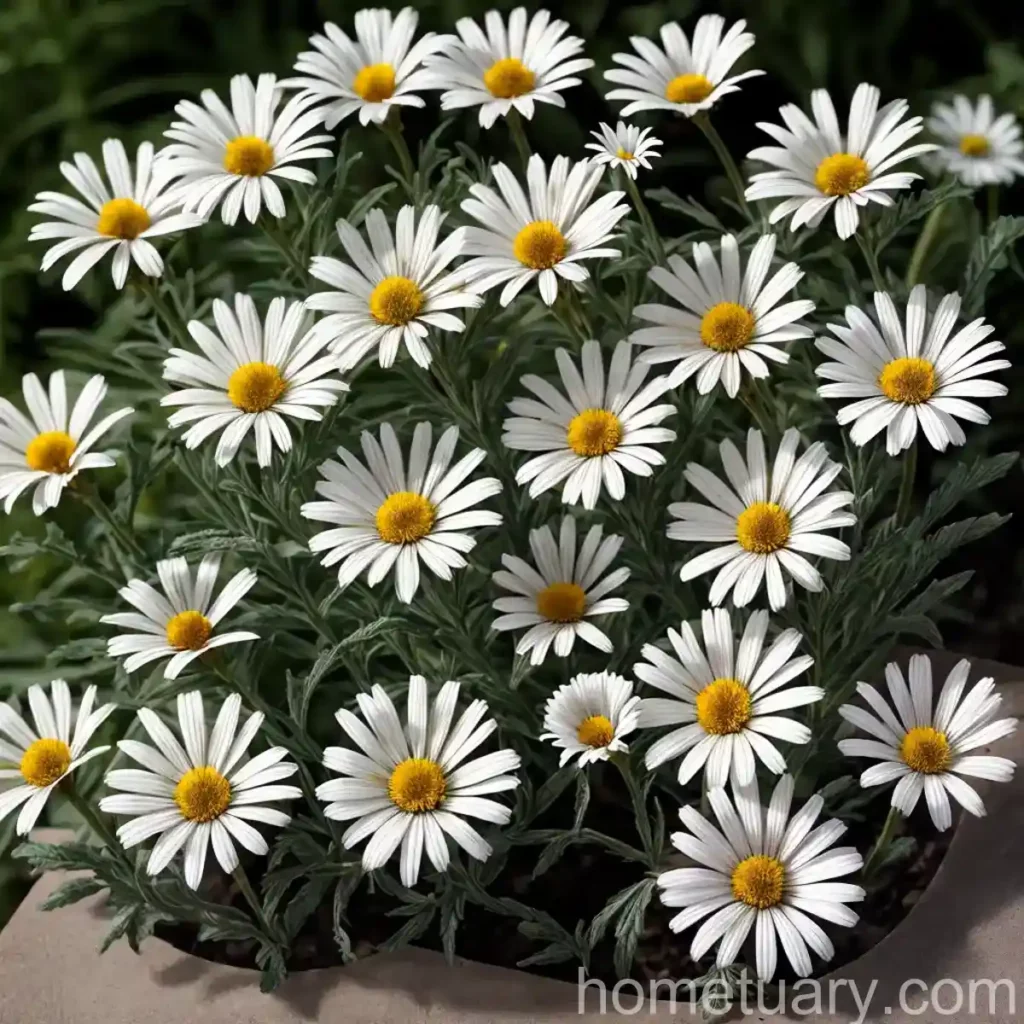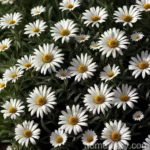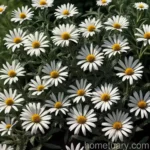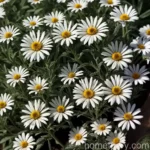Shasta Daisy (Leucanthemum x superbum ‘Snow Lady’): A Comprehensive Guide
Shasta daisies (Leucanthemum x superbum ‘Snow Lady’) are classic, long-blooming perennials that are cherished for their daisy-like flowers and easy-to-care-for nature. This comprehensive guide will delve into all aspects of growing and caring for Shasta daisies, including their culture, uses, maintenance, common diseases, pests, and propagation methods.
What is a Shasta Daisy?
Shasta daisies, scientifically known as Leucanthemum x superbum ‘Snow Lady’, are herbaceous perennials that boast large, white, daisy-like flowers with prominent yellow centers. Known for their robust and hardy nature, Shasta daisies are a popular choice for gardens and landscapes due to their reliability and aesthetic appeal. Their compact growth habit and profuse bloom make them versatile plants, suitable for various landscaping and garden design purposes.
Key Takeaways – Shasta Daisy (Leucanthemum x superbum ‘Snow Lady’)
Before diving into the specifics of Shasta daisy care and cultivation, here are some key takeaways about this delightful perennial:
- Plant Name: Shasta Daisy (Leucanthemum x superbum ‘Snow Lady’)
- Growth Habit: Herbaceous perennial
- Flower Color: White with yellow centers
- Height: 18-24 inches
- Bloom Time: Late spring to late summer
- Hardiness Zones: 4-9
- Attracts: Butterflies, bees, and other pollinators
- Uses: Ideal for borders, mass plantings, mixed perennial beds, and cutting gardens
Now, let’s explore the essential aspects of Shasta daisy cultivation and maintenance in detail.
Culture
Water
Shasta daisies thrive in well-drained soil and generally prefer regular watering, especially during dry spells. Adequate soil moisture is essential for healthy growth and abundant flowering. However, it’s crucial to avoid overwatering, as excessively wet conditions can lead to root rot and other issues. One to two inches of water per week, either from rainfall or manual watering, is typically sufficient for these plants.
Sunlight
These daisy plants perform best when grown in full sun, which equates to at least six hours of direct sunlight per day. While they can tolerate some light shade, their flowering potential may be diminished in shadier conditions. When selecting a planting site, prioritize locations that receive ample sunlight to ensure robust and profuse blooms.
Fertilizer
Shasta daisies are relatively low-maintenance when it comes to fertilizer requirements. A balanced, all-purpose fertilizer can be applied in early spring to promote healthy growth and abundant flowering. Follow the manufacturer’s instructions for application rates, and avoid over-fertilizing, as excessive nutrients can lead to lush foliage at the expense of flower production.
Soil
These perennials prefer well-drained, fertile soil with a slightly acidic to neutral pH. Amending the soil with organic matter, such as compost or well-rotted manure, during planting can improve soil structure and fertility. Good drainage is particularly crucial, as Shasta daisies are susceptible to root rot in waterlogged conditions.
Pruning
Pruning Shasta daisies is relatively straightforward and can help maintain tidy growth and encourage repeat blooming. Deadheading, which involves removing spent flowers, can extend the blooming period and prevent the plants from expending energy on seed production. This practice also promotes a neat appearance and prevents self-seeding, which can lead to an overabundance of seedlings. Pruning can be performed by pinching off spent flowers or cutting the flower stalks back to a set of leaves.
Propagation
Shasta daisies can be propagated through various methods, including division, cuttings, and seed sowing.
-
Division: Established clumps of Shasta daisies can be divided every few years in early spring or early fall. Carefully dig up the clump, and use a sharp knife or garden spade to divide it into smaller sections, ensuring that each division has healthy roots and shoots. Replant the divisions at the same depth as the original plant, and water thoroughly.
-
Cuttings: Softwood or semi-hardwood stem cuttings can be taken in late spring or early summer for propagation. Select healthy, non-flowering shoots, and remove several inches of growth from the tips. Remove the lower leaves, dip the cut ends in rooting hormone, and plant the cuttings in a well-draining rooting medium. Keep the cuttings moderately moist and sheltered from direct sunlight until they root.
-
Seed Sowing: Shasta daisies can also be grown from seed. Sow the seeds indoors in late winter, or directly sow them in the garden in early spring. Thinly cover the seeds with soil, and keep the planting medium consistently moist until germination occurs. Once the seedlings have developed true leaves, they can be transplanted to their permanent locations.
Container Popularity
Shasta daisies are well-suited for container cultivation, bringing their cheerful blooms to patios, balconies, and other outdoor spaces. When growing Shasta daisies in containers, ensure that the pots have adequate drainage holes to prevent waterlogging. Use a high-quality potting mix that offers good drainage and aeration, and water the plants regularly to maintain soil moisture. Select compact or dwarf cultivars, such as ‘Snow Lady’, for container planting, as their smaller size is better suited to confined growing spaces.
Container Common Diseases
When grown in containers, Shasta daisies may be susceptible to certain diseases, including:
-
Powdery Mildew: This fungal disease can manifest as a powdery, white coating on the leaves and stems, leading to leaf distortion and eventual decline. To prevent powdery mildew, ensure adequate air circulation around the plants, and avoid overhead watering. Applying fungicidal treatments may be necessary in severe cases.
-
Root Rot: Overwatering and poor drainage in containers can predispose Shasta daisies to root rot. To prevent this issue, use well-draining potting mix, and avoid allowing the pots to sit in water.
Disease Diagnosis
Shasta daisies are generally resilient plants, but they can be affected by various diseases, including fungal infections and leaf spot diseases. It’s essential to monitor the plants regularly for any signs of disease, such as unusual spots, discoloration, or wilting. In the event of suspected disease, prompt diagnosis and appropriate management are crucial to prevent further spread and damage.
Common Pests
While Shasta daisies are relatively resistant to pests, they may occasionally be targeted by various insect pests, including:
-
Aphids: These small, soft-bodied insects can cluster on the stems and undersides of leaves, sucking sap from the plant and potentially causing distortion or yellowing of the foliage. Insecticidal soap or horticultural oil can be effective for controlling aphids.
-
Thrips: Thrips are tiny, slender insects that can cause stippling, silvering, or distorted growth on the foliage. Regular monitoring and the application of insecticidal sprays can help manage thrips infestations.
-
Slugs and Snails: These mollusks can feed on the foliage, leaving behind ragged holes and damage. Physical barriers, such as copper tape or diatomaceous earth, can be employed to deter slugs and snails.
Botanist’s Tips
For optimal success in growing and caring for Shasta daisies, consider the following tips and recommendations:
-
Mulching: Applying a layer of organic mulch around the base of Shasta daisies can help conserve soil moisture, suppress weed growth, and moderate soil temperature. Use materials such as wood chips, straw, or shredded bark, and avoid piling the mulch against the plant stems.
-
Companion Planting: Pair Shasta daisies with complementary companion plants to create visually appealing and ecologically supportive garden beds. Suitable companion plants include lavender, salvia, coreopsis, and ornamental grasses, which can enhance the overall aesthetics and biodiversity of the planting area.
-
Winter Care: In regions where winter temperatures drop below freezing, provide winter protection for Shasta daisies by applying a layer of mulch around the plants after the ground has frozen. This extra insulation can help shield the roots from extreme cold and temperature fluctuations.
Fun Facts
- The Shasta daisy is named after Mount Shasta in California, known for its snow-capped peak, which inspired the flower’s name and association with purity and beauty.
- The iconic white petals and yellow centers of Shasta daisies make them a popular choice for floral arrangements and cut flower displays, adding a touch of classic charm to bouquets and vases.
Links to External Resources
For further information on Shasta daisy cultivation, care, and related topics, explore the following resources:
- The Old Farmer’s Almanac – Growing Shasta Daisies
- University of Florida IFAS Extension – Shasta Daisy Production Guide
- American Meadows – Shasta Daisy Information and Planting Guide
The cultivation and care of Shasta daisies, also known as Leucanthemum x superbum ‘Snow Lady’, offer gardeners an opportunity to incorporate an iconic, reliable, and beautiful perennial into their landscapes and gardens. With its classic white flowers, easy maintenance, and versatility in various settings, the Shasta daisy continues to be a beloved choice for both novice and seasoned gardeners alike. By understanding the essential aspects of Shasta daisy culture, uses, maintenance, and propagation, individuals can fully appreciate and successfully cultivate these charming perennials in their outdoor spaces.















